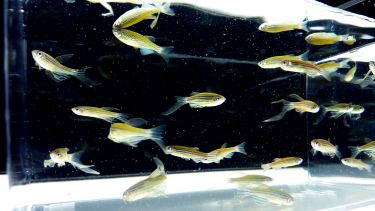Our history and the Bateson legacy
The University of Sheffield has had a distinguished reputation in the use of model organisms for understanding key biological principles for over 60 years since John Thoday founded the Department of Genetics in 1954.

William Bateson
John Thoday was heavily influenced by the work of William Bateson, the ‘Father of Genetics’ who was born in Whitby, Yorkshire, in 1861. Bateson was awarded an honorary degree from the University of Sheffield in 1910.
His early interests in embryology and morphology led to a fascination with variation. In seminal work at the turn of the century, he performed breeding experiments, including experiments in insects and chickens that were designed to prove Mendel’s earlier theories of heredity.
His rediscovery and interpretation of Mendel’s work, together with his passion for communicating his ideas to colleagues and students, led to the foundation of the new science of ‘genetics’.
Bateson’s ideas on heredity and variation exerted an enormous influence in the field. He shaped the views of many other key geneticists throughout the 20th Century.
Furthermore, archived letters reveal his interests in the contribution of genetics to a range of medical topics including eye diseases and colour blindness. His legacy therefore extends beyond the rich field of genetics and into the use of innovative models for understanding human disease.
Bateson’s scientific contributions were widely recognised, through Fellowship of the Royal Society (1894), endowed Chair in Biology at the University of Cambridge (1908) and Directorship of the John Innes Horticultural Institute (1910).
A department of genetics for Sheffield
As head of the new Department of Genetics, Thoday focused his studies on understanding the genetic basis of why individuals within a species are different from each other and also why this was critically important for evolution.
In a seminal paper called The Components of Fitness (1953), he analysed the variability and asymmetry of bristle number on the two sides of different Drosophila fruit flies.
Subsequently, he and his students went on to develop methods to locate the ‘polygenes’ that caused this variability. This approach of using a simple model system is still a key fundamental method used today by researchers (including those at the Bateson Centre) to understand the biological basis of human disease.
In 1959, Thoday left Sheffield to become head of the Genetics Department at Cambridge University. One of the many undergraduate students that he mentored during his tenure at that University was a young Philip Ingham.
During his own scientific research career, Ingham himself has used Drosophila and zebrafish as genetic tools to analyse how the basic body plan forms. He has also used these model systems to study the genetic signals that make cells differentiate and regenerate.
In 1993, Ingham was made director of the newly formed Developmental Genetics Programme (DGP) at The University of Sheffield. He, in turn, recruited a cohort of developmental biologists who themselves used a diverse range of species to address a variety of basic and applied biological problems.
In 2004, the DGP evolved into the MRC Centre for Developmental and Biomedical Genetics (CDBG). This new centre expanded on the work of the DGP to more explicitly aim to understand human disease. With this aim, the Centre became one of the first centres explicitly encouraging developmental biologists to work with clinician scientists.
The primary aim of CDBG was to stimulate the translation of the findings discovered in non-mammalian model systems in to the development of new treatments that could be used in the clinic.
In 2009, Professor Marysia Placzek (herself recruited previously by Ingham) took over the directorship of the MRC Centre. She led the Centre through the transition to University Research Centre and the rebranding to The Bateson Centre, in honour of William Bateson. As director, Placzek fostered further successful interactions between developmental biologists and clinicians at The University of Sheffield and it is on that exceptionally strong foundation that The Bateson Centre now builds.
In 2015, Professor Steve Renshaw assumed the role of Director, strengthening the place of clinical insights in focussing the research agenda. Prof. Renshaw's interest in immunity links together several disease groupings and helps position the Bateson Centre in the mechanistic biology heart of the Healthy Lifespan Institute
